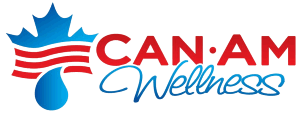Is the bottled water fad slowly sinking?
“ There is enough water for human need, but not for human greed .” ~Mahatma Gandhi
FLOW – For the Love of Water , a film launched at the 2008 Sundance Festival, shows an employee of a chic restaurant filling a bottle with a garden hose in the parking lot, then serving it to a couple who think they’re drinking pure spring water and praises its virtues.
Many restaurants, however, actually operate quite differently. It would be a mistake to believe that they all cynically exploit what could be called the bottled water fad.
In May 2007, an article in the prestigious New York Times noted that several trendy Californian restaurants deliberately went against the current serving only filtered tap water in washable and reusable carafes. To help their clientele adjust, some even offer house-made sparkling water.
It seems that it all started when Alice Waters, who the newspaper called “the godmother of all things organic, sustainable and local”, stopped selling bottled water at her stylish Berkeley restaurant Chez Panisse replacing it by house-made seltzer. As the media took note, a number of other New York restaurants followed suit.
As the Times points out, it’s not in the interest of restaurants to turn down an income estimated at $200 to $350 million a year. Yet the idea of “drinking locally” is gradually making its way as the public becomes increasingly aware of the environmental impact of producing and transporting water bottles, not to mention that nine out of ten bottles according to some estimates, end up in the garbage instead of the recycling box.
Different strokes for different folks?
Quoting Dr. Gina Solomon of the Natural Resources Defense Council (NRDC), a non-partisan international environmental group, the article stresses that tap water is much more stringently controlled and regulated by the Environmental Protection Agency (EPA) than bottled water is by the Food and Drug Administration (FDA).
The EPA requires that several tests be performed every day and that the results be made available to the public. The FDA asks only for weekly tests which are carried out by the industry itself with no obligation to report the results to the authorities or the public.
According to the International Bottled Water Association, an average yearly consumption of about 28 gallons a year per person underscores the fact that many North Canadian consumers still cling to bottled water. This explains why many restaurant owners are reluctant to give up offering it, although the Times predicts that they’ll eventually end up going with the flow just as they did with… cigarettes! A thirst for growth
A thirst for growth
In an article called ” Glass of H2O from the Tap, Please “, Wired magazine quoted a report by the World Wildlife Foundation (WWF), saying that in many countries bottled water is no healthier than tap water – although it can cost up to 1,000 times more.
According to the WWF report, the estimated $22 to $33 billion a year global bottled water market is the world’s fastest growing beverage industry. It’s powered by skillful marketing strategies that project an image of health and upscale prosperity and by a widespread mistrust of municipal treatment systems. The organization believes that the real solution lies in improving the collective management of our lakes and rivers.
Younger people haven’t been forgotten either. In 2006, the Berkeley School District replaced all water bottles by large containers of tap water. In spite of an initial negative reaction, the students took little time to adjust.
The backlash against bottled water also includes more individual reactions, such as the ban imposed by San Francisco mayor Gavin Newson, who prohibited spending public funds to buy bottled water.
Finally, a site called Think outside the bottle encourages Canadian consumers to make a pledge to give up bottled water – reminding them that two out of five water bottles are simply filled with tap water and sold at ransom prices. It recalls the following facts:
- In the US, one person out of five drinks bottled water only.
- Every year, producing and transporting water bottles requires approximately 17 billion barrels of oil – enough to fuel a million Canadian cars for a year – and generates about 2.5 million tons of carbon dioxide.
The site, which is described as “a collective effort of major national organizations, cities, prominent people, and concerned consumers across North Canada”, encourages visitors to find out more about water issues and to begin drinking tap water only.
